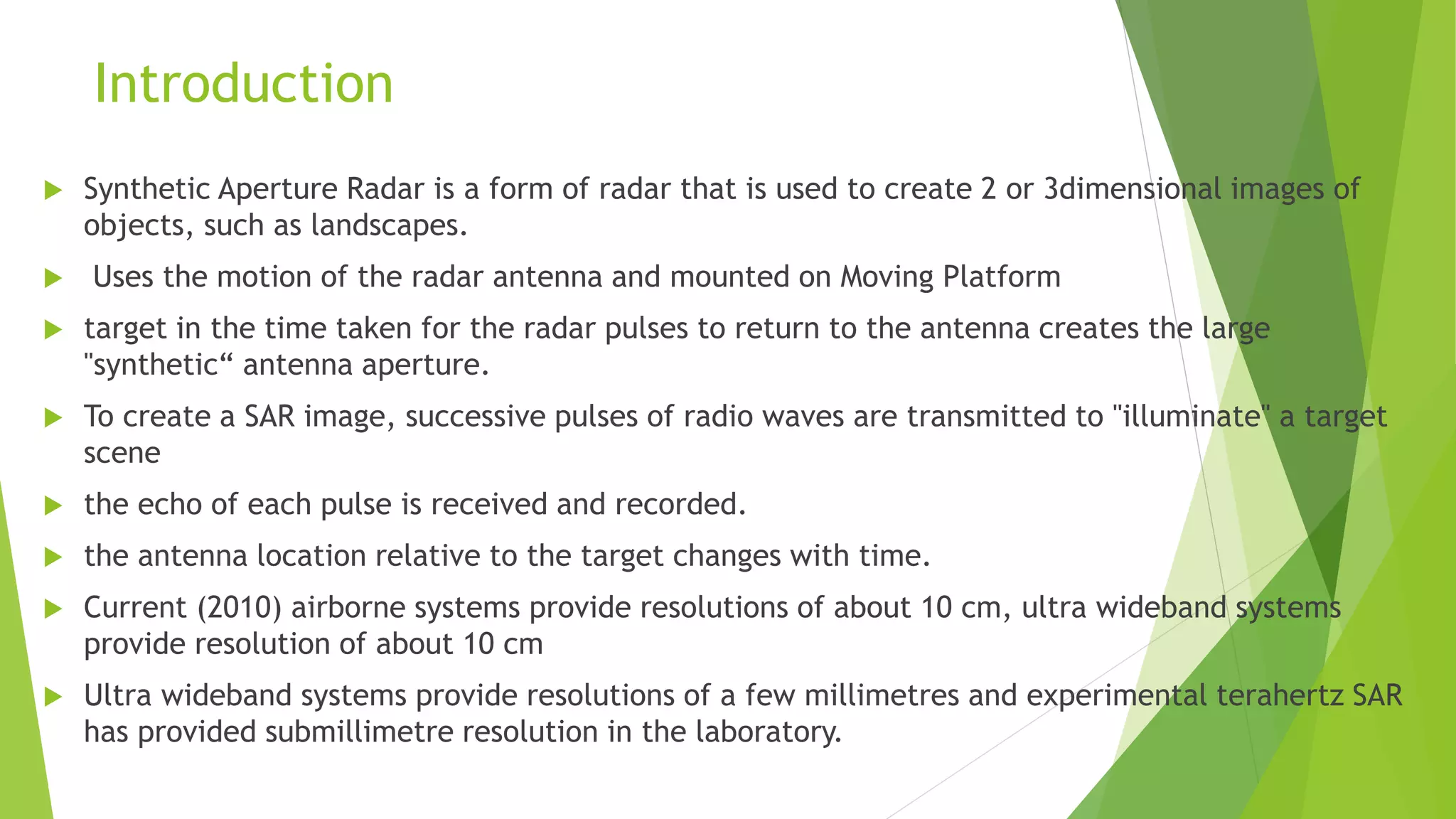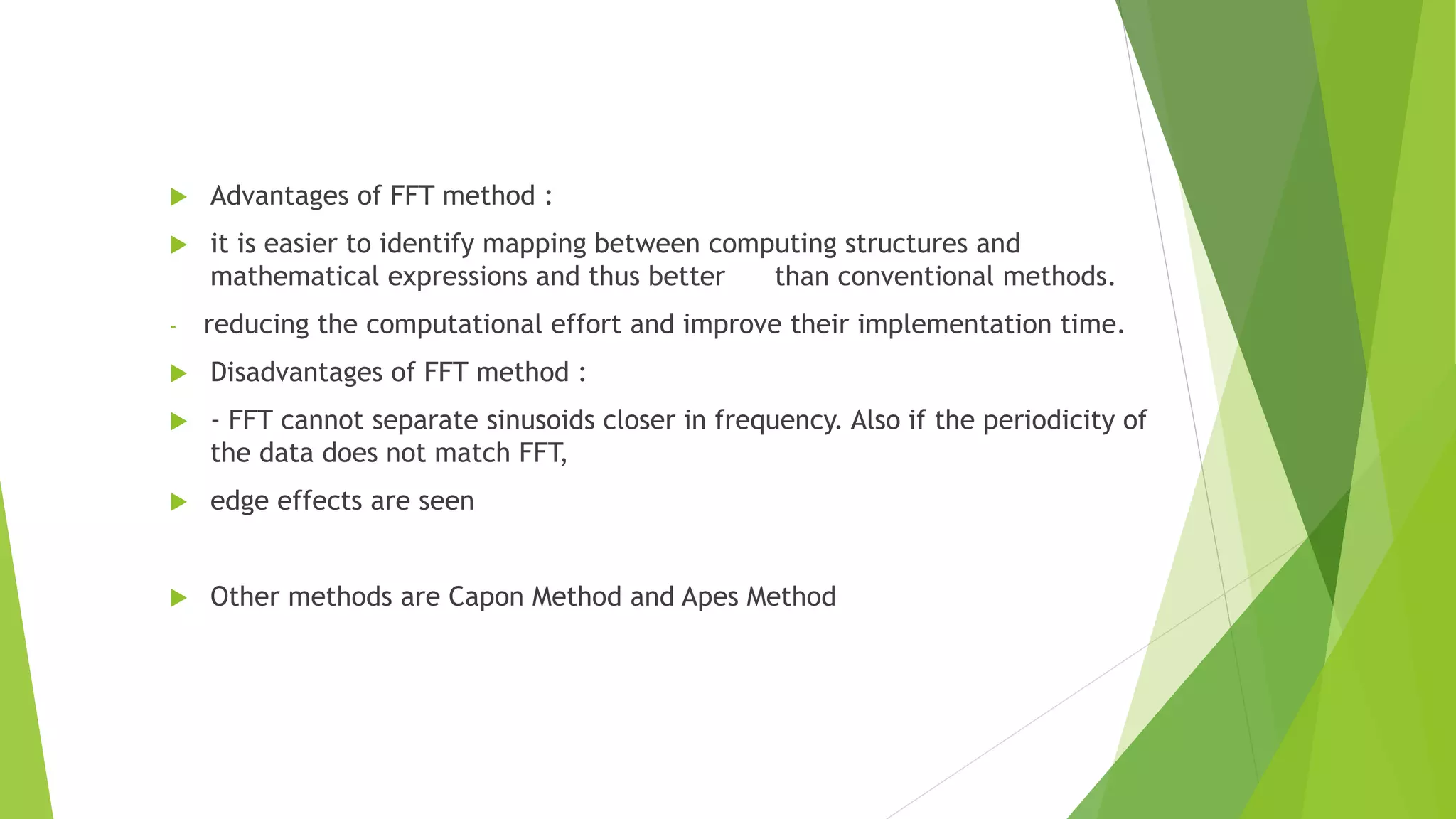This document provides an overview of synthetic aperture radar (SAR). SAR uses motion of a radar antenna mounted on a moving platform to synthesize a large antenna and create high-resolution radar images. It describes the basic principles of SAR, including how successive radar pulses are transmitted and echoes received to build up an image. Applications of SAR include remote sensing, mapping, and monitoring changes over time. Spectral estimation techniques are used to process SAR data and improve resolution. Polarimetry and interferometry are additional SAR techniques. Typical SAR systems are mounted on aircraft or satellites.















